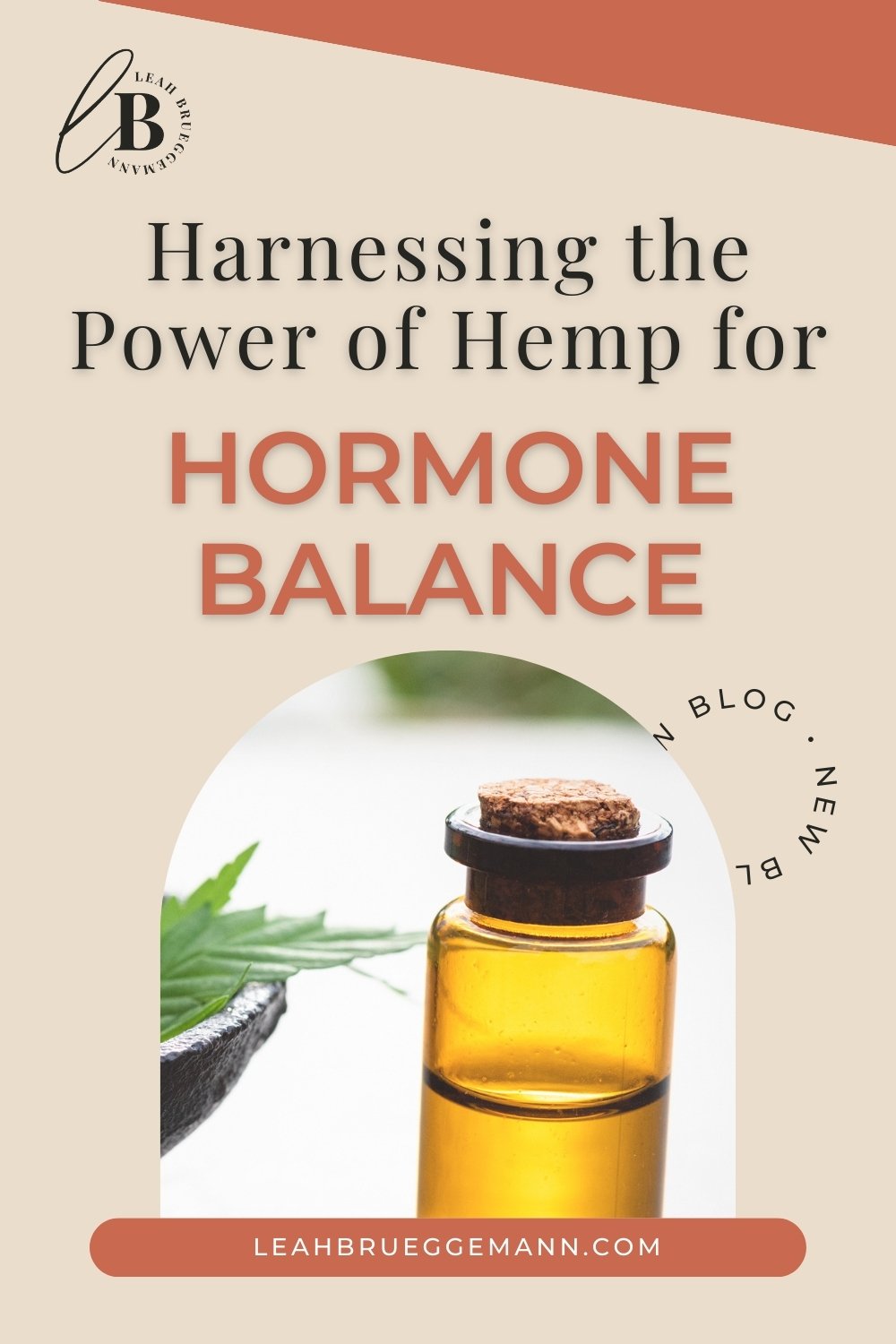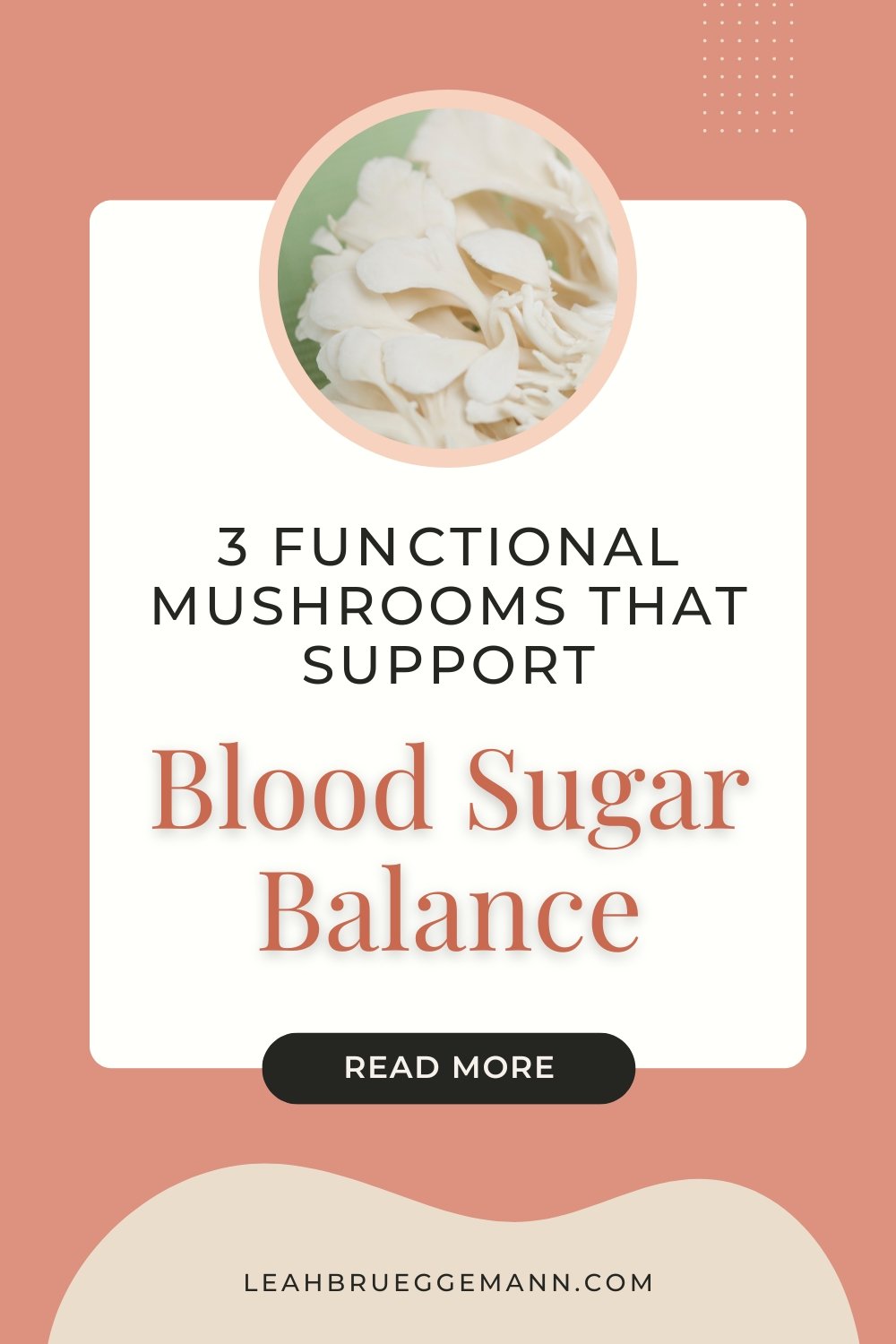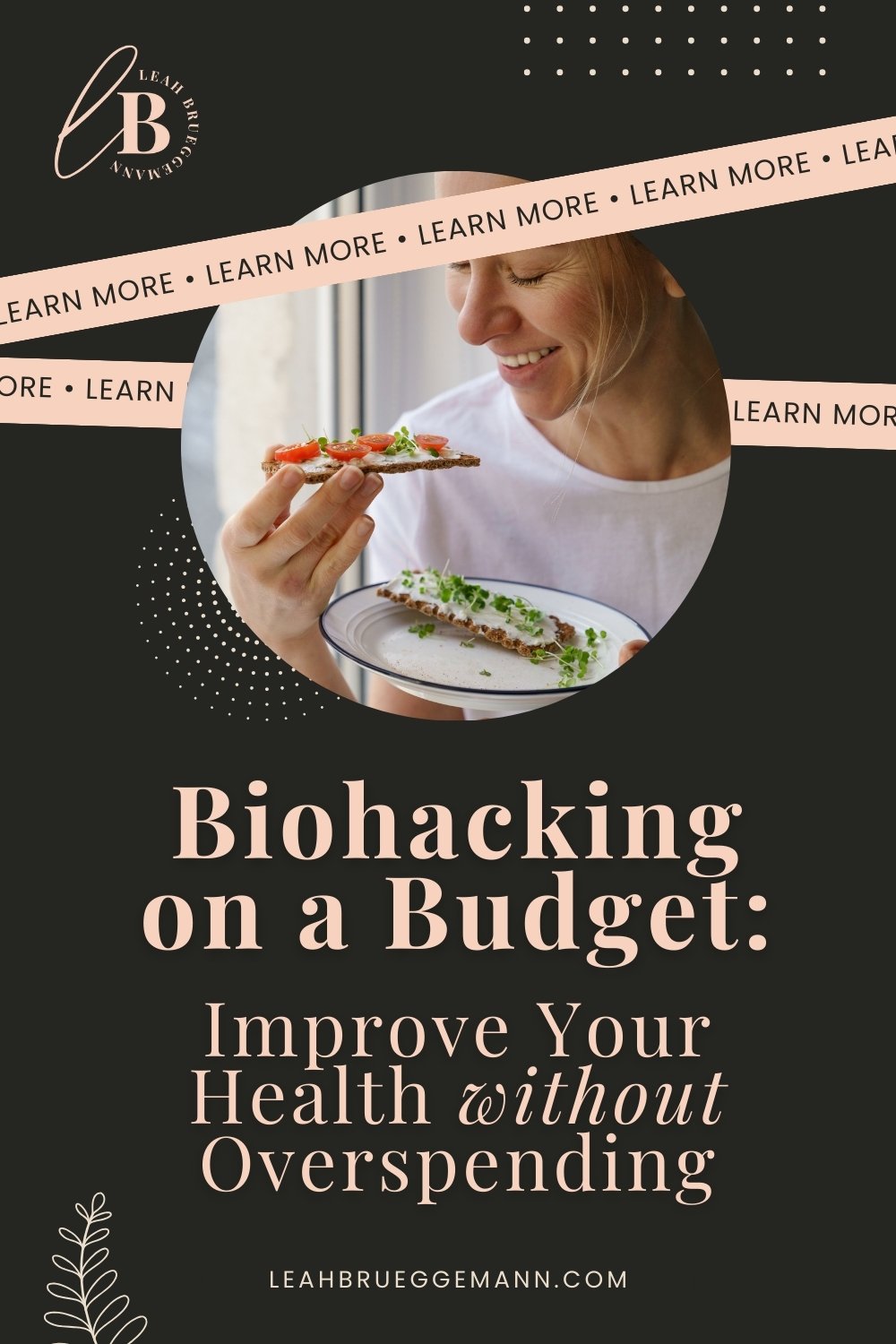Symptoms and Causes of Low Progesterone
Think progesterone is only something to focus on when you’re pregnant? I’m here to tell you that progesterone does SO MUCH MORE for you throughout your menstrual cycle. It affects things like anxiety, depression, PMS, and more - so this is really something we want to pay attention to!
So, let’s chat about the signs and symptoms of low progesterone, how to increase progesterone naturally, and why you should actually care about your progesterone level.
Low Progesterone Symptoms
Spotting During Luteal Phase
One of the most common low progesterone signs is spotting during your luteal phase.
Your luteal phase starts after ovulation and lasts until your next period. If you are spotting during this time, it’s a sign you may be low on progesterone. Thankfully this is one of the big signs of low progesterone that’s really easy to identify!
This is my favorite analogy to explain why this happens.
So, think about your progesterone as a grocery bag that’s holding everything together. If your progesterone either doesn’t get high enough after ovulation OR it drops too quickly, you may deal with spotting during your luteal phase.
So basically, your uterus is prematurely shedding, just like your groceries are leaking out of your grocery bag. Maybe your grocery bag has some holes or it's not as strong as it should be. And this shows up as spotting during your luteal phase, before your period.
If you’re spotting just the day before your period, that’s not really a red flag, but if you’re spotting 2 days or more before your period, that is a red flag and you should start paying attention to what is going on.
Brown Blood
If you’re dealing with a lot of brown blood at the beginning and end of your period, this can be a sign of low progesterone for some women.
Yes it’s just old blood, oxidized blood, or slower moving blood. But instead of just writing it off, some questions you may want to ask yourself are, “WHY is it slower moving and WHY am I getting it?”
For a healthy menstrual cycle, you really want to be seeing cherry red or deep wine red blood from the start of your period. So if you’re dealing with a lot of brown in the beginning and the end, that can be a sign of low progesterone.
Painful Cramps
Another sign of low progesterone is having bad cramps.
If you’re dealing with a lot of bad cramps, this could actually be a sign of a tilted uterus. This is not something to freak out about! It can actually be fixed. I suggest seeing a pelvic floor therapist who specializes in this to help you.
Heavy Periods
Another symptom of low progesterone is really heavy periods, especially as you’re heading into perimenopause.
This is definitely something to keep an eye on if you’re having a lot of heavy periods and it’s something you may want to bring up with your doctor as well.
Other Symptoms
These are a few other symptoms you may notice before your period starts each month that can be signs of low progesterone:
Breast tenderness
Strong mood swings
Anxiety
PMS
Temp not spiking after ovulation
Temp dropping prematurely during luteal phase
Luteal phase not lasting about 12 days
What is Progesterone
Maybe you skimmed through these signs and symptoms of low progesterone and you’re like, “Okay, I feel like I have some of these things, but why should I actually care?”
Let’s dig into what progesterone actually is and what it does for your body!
We most often associate progesterone with pregnancy, but it actually affects so many other areas of your overall health.
For example, progesterone has a calming effect on your brain and therefore can really help with anxiety and promote sleep. It reduces inflammation and helps builds your bones. And it even increases your metabolic rate during your luteal phase causing you to burn an extra 279 calories per day!
But most importantly, progesterone’s job is to get your uterus ready for pregnancy. Your sex hormones, like progesterone, work with your reproductive cycle (and you want to keep this healthy, even if you’re not looking to get prenant!).
When you ovulate, your follicle that releases the egg forms what’s called the corpus luteum, which is what produces your progesterone.
So for example, if you were going to get pregnant, the corpus luteum would be producing the progesterone for that first part of the pregnancy until the placenta takes over. That’s why you often hear about progesterone in terms of pregnancy because it’s very crucial in that first part to support the pregnancy.
After you ovulate, your progesterone levels increase and it should reach a certain peak before slowly coming back down. When it fully lowers, this is what signals your period to start.
Okay, so now that you know what progesterone is and the common signs and symptoms of low progesterone, let’s talk about what causes your progesterone levels to be low.
Causes of Low Progesterone
Two things could be happening that are causing you to have low progesterone:
Your progesterone could not be reaching that peak before dropping.
OR it could be reaching that peak, but not staying elevated long enough and dropping prematurely.
You could also have low progesterone in relation to your estrogen levels because your body needs a certain ratio of estrogen to progesterone. So even if your progesterone is NOT too low, you could have a lot of excess estrogen throwing off that ratio and therefore causing those signs of low progesterone.
For some women, the driver of their low progesterone could be endometriosis, it could be a thyroid issue, it could be not getting the correct nutrients. The exact cause is unique to every individual, so you want to work with your doctor to figure out what your specific issue is and address it.
How to Test for Low Progesterone
A common way to test your progesterone levels is through a blood test. However, it’s also common for a blood test to show that you have normal progesterone levels, even though you are still struggling with some symptoms.
So that’s where I recommend getting a DUTCH test because it not only tests your progesterone levels through your urine, but it also tests how your body is metabolizing progestone which is really important.
Another way would be to get a saliva test, which will show the bioavailability of progesterone, meaning the hormones that your body can use immediately.
You can also test this yourself at home using Proov strips, which have you test your progesterone multiple days after ovulation leading up to your period to get a read on what your progesterone levels are like. This is really helpful, especially if you’re tyring to get pregnant and it’s really cost effective as well.
It’s also important to be looking at both your labs AND the symptoms you’re experiencing. This is the big difference between a conventional medical doctor and a naturopathic doctor or practitioner.
A conventional medical doctor is just there to look at your labs and diagnose.
But if you go to a naturopathic doctor, or even a practitioner, they will look at any screenings and any labs in relation to your symptoms to see what’s going on. They look more holistically at your life and ask how it makes sense in relation to any of the functional tests they ran.
Something else to keep in mind when it comes to testing your progesterone levels is that progesterone also fluctuates. So if you get your lab done right before your progesterone pulses, it could be showing low when your actual levels are okay.
This is why sometimes your typical blood draw is not the most accurate way to get a reading on your progesterone. That’s where I recommend doing a saliva test or the DUTCH test if you really want to keep an eye on it.
DUTCH testing is something I actually do with my Premium Access coaching clients so that we can get a clearer picture of what’s going on with their hormones.
So these are all the things I recommend keeping an eye on to help you get an idea of what’s going on. I know sometimes people are like, “Oh my gosh, I’ll just run and get this test and that’ll tell me what’s happening.”
And yes, tests can be awesome at helping us understand what’s going on in our body! But also, let’s take a step back and look at EVERYTHING that’s going on. Let’s look at your cycle, let’s look at what’s happening before your period and your symptoms to make sure we have a really clear picture.
That way when you have a test come back, you’re not just taking those results as gospel. You’ll have a better idea if maybe you want to get a second test or try a different type of test.
I will say though, if you are pregnant and need to get a read on your progesterone levels ASAP, then you do want to go in for a blood test because you don’t have time to wait for all the other tests. So in that case, I do recommend that you talk to your doctor and get that figured out.
How to Increase Progesterone Naturally
If you have low progesterone, these are some things you can do to naturally increase it.
First, a common driver of low progesterone is stress. When you are stressed, your body prioritizes making cortisol (your fight-or-flight stress hormone) over progesterone. So that’s why stress is such a huge driver of low progesterone!
And I know you’re like, “I’m sorry Leah, everything in my life is stressful right now - what do you want me to do about it?”
Honey. Let me tell you. It’s not like our stress is going to magically go away. I wish it would - but it’s not going to!
Instead, we have to learn how to manage and THRIVE through this stress. Here are some examples of what you can do to manage your stress:
EFT tapping
Meditation
Lower impact exercises
Stretching
Journaling
It doesn’t really matter what it is, you just have to learn how to manage the stress in a way that is productive for you. And I do not say that lightly! I know so often we’re just like, “I just need to get through this week!” But you keep saying that every week. So you really have to take note of where your stress levels are at and learn how to support yourself through it, not just block it out.
Learn more about managing stress here.
Some things that you can do physically to support managing your stress are supplementing with magnesium and potassium.
Potassium is the first mineral to get depleted by stress. You should be eating 4700 milligrams per day! So eating potassium rich foods throughout the day is going to be super beneficial to support your body in managing stress.
You could also take a potassium magnesium bath at nighttime. Not only is that going to be relaxing, but hey, you’re also going to be replenishing your minerals! So I would highly recommend that.
Lastly, vitamin C has been proven to help support a rise in progesterone. So eating vitamin C rich foods is going to be super beneficial and then maybe even supplement with an amazing food based source of vitamin C.
You’ll notice that I actually DON’T recommend progesterone cream! And the reason is because something is going on in your body that’s causing you to have low progesterone. So instead of just supplementing, we want to figure out what’s actually going on. Otherwise, maybe you supplement and increase your progesterone, but then other symptoms start cropping up because you didn’t address the root cause.
So my recommendation is to support your body. Remember your progesterone starts with having a strong corpus luteum that produces adequate progesterone. And a strong corpus luteum comes back to your ovulation!
You can also support your thyroid with nutrition because your thyroid affects ovulation. So that looks like eating adequate amounts of carbs because you need carbs for healthy ovulation. Adn in general, eating lots of nutrient dense foods is so important to support your hormones!
And no, I don’t mean crash dieting or just eating good to support your hormones for a week out of your cycle when you’re about to get your period. It’s important to track your entire menstrual cycle and support your body through each phase.
And remember that what you’re doing now will affect your period (and affect your progesterone and ovulation) three months from now because your follicle has a 90 day journey. So it’s really important to stay consistent and not just do it for a couple days or a couple weeks and think it’s not working. You have to be consistent and give it that full 90 days.
So, start eating for your cycle, get your vitamin C, magnesium, and potassium in, and manage your stress!
By the way, eating vitamin C rich foods will go a long way to supporting your body. I have seen women simply do this and get rid of food sensitivities because food sensitivities cause inflammation!
I’ve seen women lengthen their luteal phase. I’ve seen spotting go away completely. I’ve seen women completely stabilize their moods. I’ve seen women get rid of anxiety and PMS and get rid of their cramps because low progesterone really does cause a lot of PMS symptoms!
You don’t have to feel like every shark week, your period is gonna take over your life. I want you to take back control of your hormones!
Learn more about supporting your hormones throughout your whole menstrual cycle by downloading the free Painless Period Prep Guide!
The recommendations presented in this blog are not a substitute for medical advice from a qualified doctor. Before making any changes to your diet and lifestyle, please consult with your health care provider.
Some of these links contain affiliate links.




